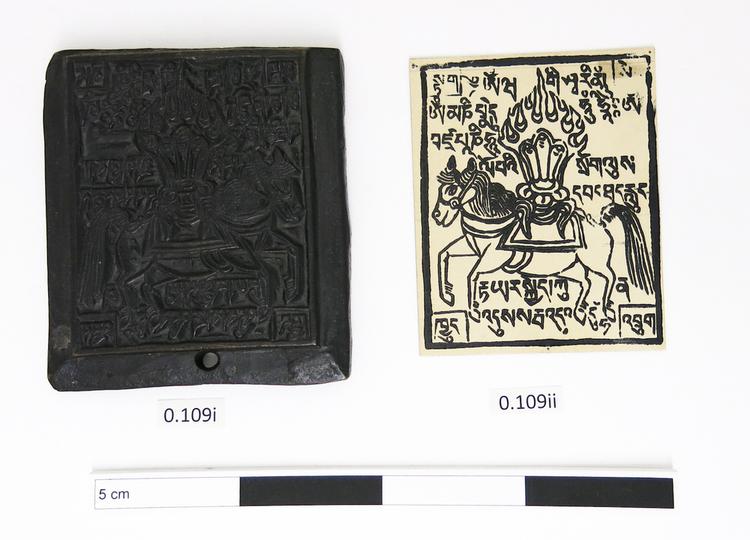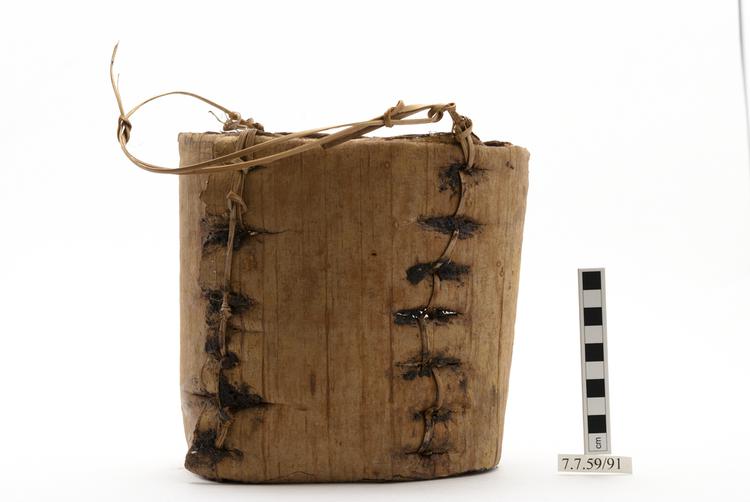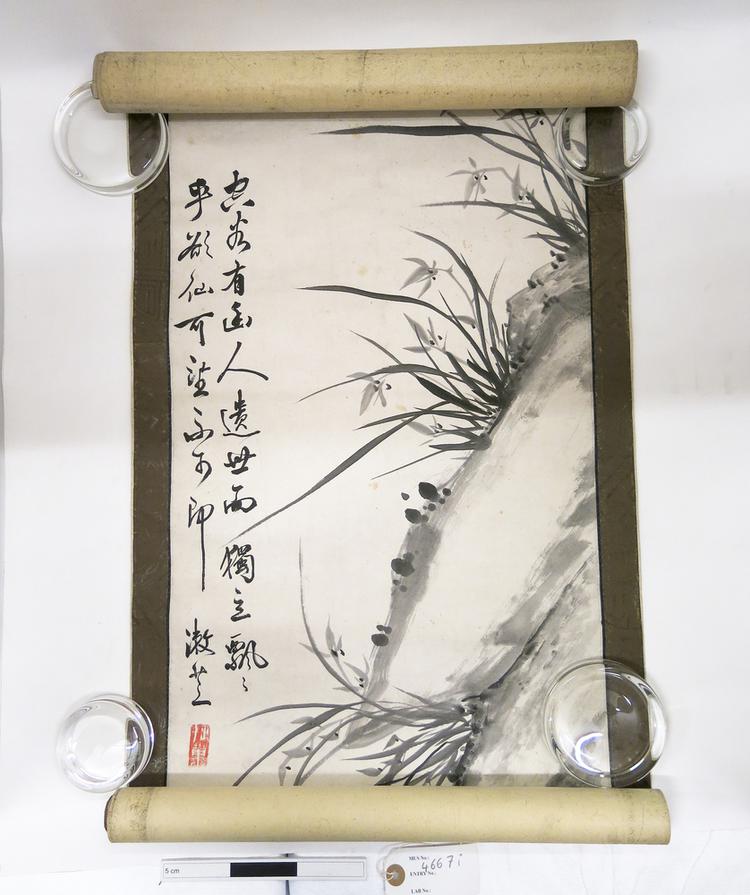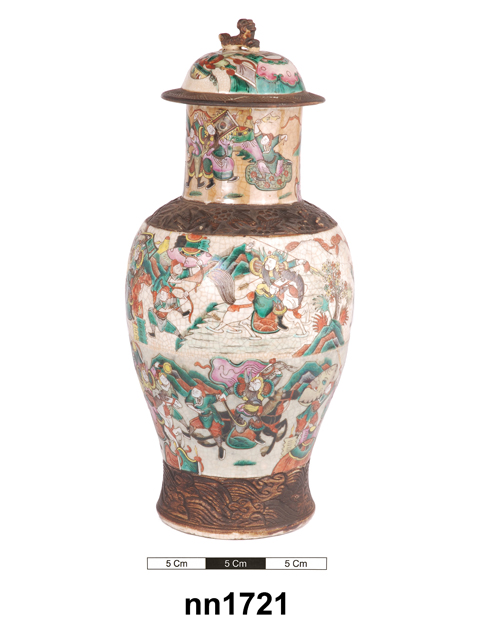
Carved wooden printing block and sample of print taken from it. Used to print wind horse prayer flags (Lungta parshing [rlung rta dpar shing]). At its centre is the supreme horse Bhala, bearing three flaming jewels on its back. The wind horse is a symbol of speed and the transformation of bad fortune to good fortune. The three flaming jewels symbolise the Buddha, the Dharma (Buddhist teachings) and the Sangha (Buddhist community): the three cornerstones of the Tibetan philosophical tradition. On each corner of the block is the first syllable of the four powerful animals, also known as the Four Dignities: tiger (top left), Lion (top right), garuda (bottom left) and dragon (bottom right).
This woodblock would have been used for printing Lung ta or wind horse prayer flags. At its centre is the supreme horse Bhala, bearing three flaming jewels on its back. The wind horse is a symbol of speed and the transformation of bad fortune to good fortune. The three flaming jewels symbolise the Buddha, the Dharma (Buddhist teachings) and the Sangha (Buddhist community): the three cornerstones of the Tibetan philosophical tradition. On each corner of the block is the first syllable of the four powerful animals, also known as the Four Dignities: tiger (top left), Lion (top right), garuda (bottom left) and dragon (bottom right). Wood blocks such as this one could feature versions of approximately 400 traditional mantras or prayers, each dedicated to a particular deity. This woodblock displays mantras relating to BhagyaSri, Avalokitesvara, Vajrasattva and the Goddess Tara. Typically prayers for the person who mounts the flags are included in prayer flags and this example contains a prayer which seeks, “The enhancement of good health, longevity, power and success to the one named”, followed by a space to write one’s name.






